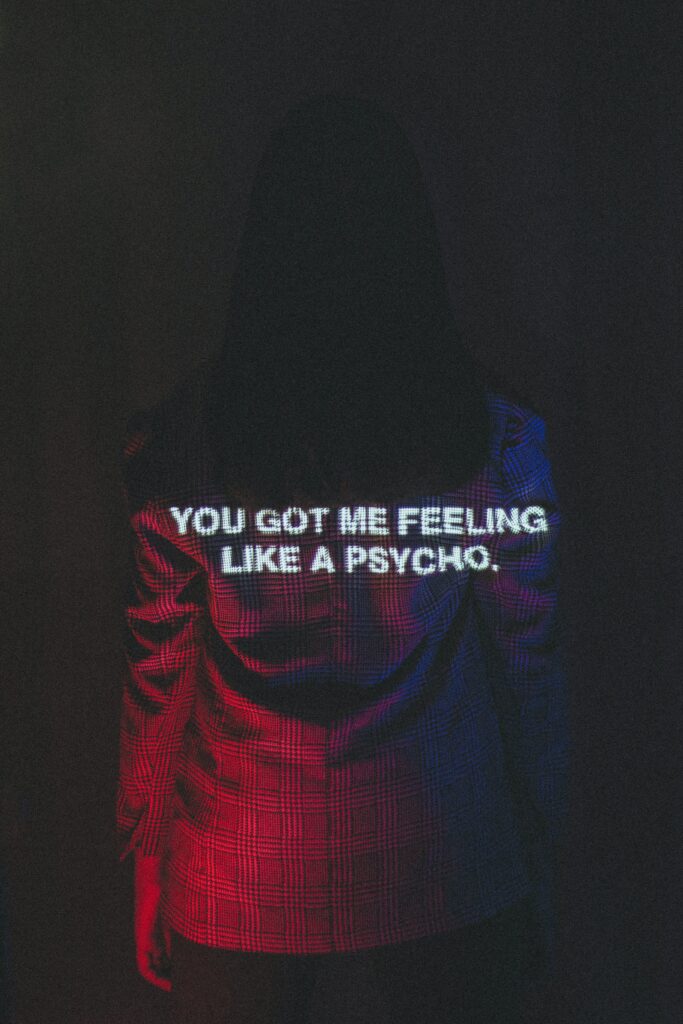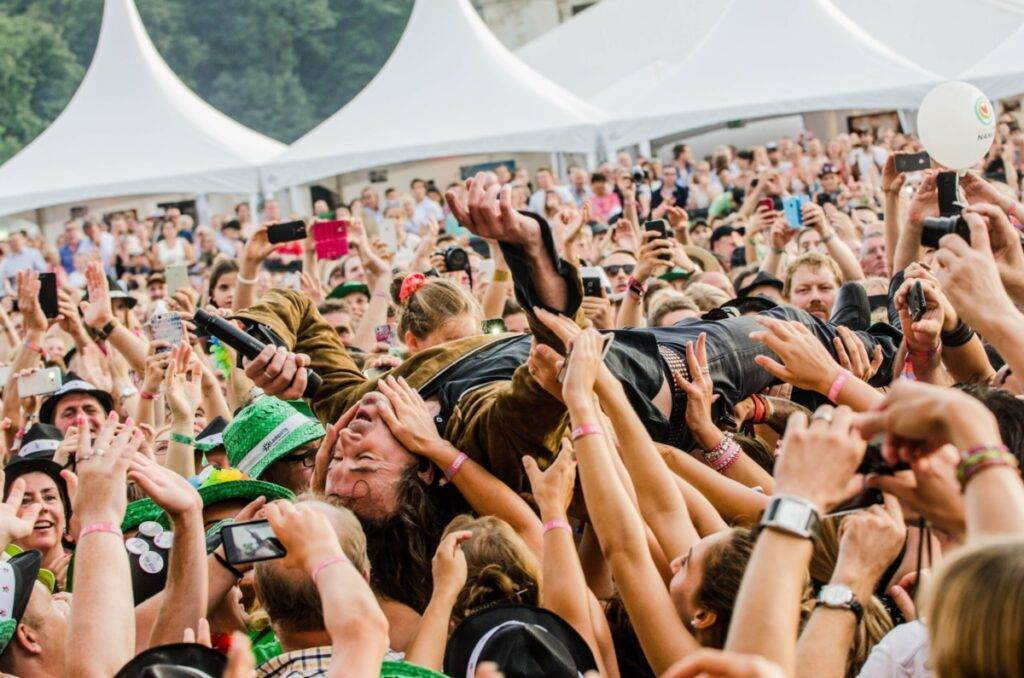In today’s world, social media has become an integral part of our lives. We rely on it to stay connected and share our lives with friends and family. However, the use of these platforms can lead to a new type of relationship: toxic parasocial relationships. These relationships are characterized by one-sided interactions between two people or groups with unequal power dynamics. By examining this phenomenon and its effects, we can better understand how to recognize and handle such situations before they get out of hand.
Parasocial connections form when individuals feel a connection with public figures or influencers in the online space without any actual contact or interaction taking place. This disconnect between reality and virtual interactions often leads to feelings of anger, disappointment or isolation for those involved as there is no real communication happening between them. Furthermore, due to the lack of physical presence from either side, users may not be aware that boundaries have been crossed until it is too late.
The implications of toxic parasocial relationships on social media can be far-reaching, affecting both parties involved and their followers alike if left unchecked. In order to prevent further harm from being done, it is important to explore the underlying causes behind these types of connections and find effective ways to deal with them before they spiral out of control.
what are parasocial relationships?
One-sided emotional bonds that people develop with media figures, such as celebrities, social media influencers, fictional characters, or even news anchors, are referred to as parasocial relationships. These connections are referred to as “para” relationships because they are not reciprocal or mutual, but rather one person’s perception of a connection with another who is unaware of it.
When people devote time, focus, and emotional energy to following the lives, careers, and behaviours of media personalities, parasocial connections can arise. If you want to do this, you can follow them on social media, watch their television programmes, movies, or YouTube channels, read their interviews, or take in any other media showing them. Despite never having encountered them or interacted with them in real life, some audience members may feel as though they are familiar with these figures.
Parasocial relationships can give some people a feeling of connection, amusement, and even inspiration, but they can also have unfavourable effects. When their perceived “friendship” with a media character is not reciprocated, people who put too much effort into these one-sided relationships may experience disappointment, loneliness, or even depression. In severe circumstances, people may develop obsessive or stalking tendencies, endangering both themselves and their public image.
In recent years, as social media usage has increased and the distinction between private and public life has grown increasingly blurry, it has become simpler for people to develop parasocial connections with celebrities. As a result, it’s critical to maintain a healthy balance between one’s real-life relationships and media consumption as well as to be conscious of the potential drawbacks and limitations of parasocial relationships.
how do parasocial relationships form
When people become attached to media figures or celebrities through exposure to their substance or image, parasocial relationships may develop. Some of the main paths parasocial interactions can take are as follows:
- Exposure: The first stage in creating parasocial interactions and relationships is being exposed to media personalities. Through a variety of platforms, including TV, movies, social media, news, or any other media platform, people can be exposed to media personalities.
- Attraction: The next stage is attraction, in which people are drawn to particular media characters because of their good looks, skills, personalities, or any other quality that appeals to them.
- Identification: The third stage is identification, in which people believe they have something in common with the media figure and recognise themselves in them. Shared hobbies or experiences may be the cause of this.
- Emotional attachment: The fourth stage, emotional attachment, is when people begin to experience affection, admiration, and even love for the media personality. They start to feel invested in their lives and worry about their happiness and well-being.
- Investment: The last stage is an investment, where people commit their time, effort, and sometimes even money to keeping up with the media personality’s antics and becoming invested in their success. This can entail doing things like keeping up with them on social media, going to their shows, purchasing their goods, or even taking part in online conversations about them.
These five steps, which frequently take place unconsciously, can result in a parasocial relationship, in which people feel as though they truly have a connection with the media figure despite there being no reciprocal interaction. Although these relationships can be enjoyable, it is important to keep in mind that they are not true friendships and can have both positive and negative impacts on people.
examples of parasocial relationships
Parasocial connections can develop with a variety of media personalities and can be found in different media. The following are a few of the most prevalent instances of parasocial relationships: Parasocial connections can develop with a variety of media personalities and can be found in different media. The following are a few of the most prevalent instances of parasocial relationships:
- Parasocial Relationships with Celebrities: Many people develop parasocial relationships with famous people they have never encountered in person. These connections frequently come about as a result of media, including films, TV programmes, music, and social media. Fans who follow the lives of performers, musicians, or athletes because they identify with them as friends are examples.
- Parasocial Relationships with Social Media Influencers: In recent years, social media influencers have become incredibly famous, and many people have formed parasocial relationships with them. Despite never having encountered the influencer, people may feel as though they personally know them thanks to their frequent posts, stories, and live streams.
- Fictional Character Parasocial Relationships: It is possible for parasocial relationships to develop with fictional characters from movies, TV programmes, video games, and books. People might become emotionally attached to the characters and even regard them as role models or sources of motivation.
- News Anchor Parasocial Relationships: Reporters and news anchors can develop parasocial connections with their viewers. Despite never having encountered the anchor in person, viewers may grow to trust, respect, and admire them.
- YouTube Creator Parasocial Relationships: Due to the popularity of YouTube and other video-sharing websites, many fans develop parasocial connections with their preferred producers. The personality, way of life, or views of the creator may strike a chord with viewers who then devote time and effort to watching their videos, taking part in live chats, and keeping up with them on social media.
These are only a few of the numerous ways parasocial interactions can develop in the media. Although there are levels of parasocial relationships that can entertain, inspire, and make us feel connected, it is important to keep in mind that they are not true friendships, and it is crucial to strike a good balance between media use and interpersonal interactions.
The Cons Of Parasocial Relationships

Parasocial interactions can be entertaining and a source of emotional connectedness, but they can also be problematic. The following are a few drawbacks of parasocial relationships:
- Emotional Dependency: People who form parasocial connections may start to rely emotionally on the media character. They might believe that the media personality’s existence or material is necessary if they are to feel content, joyful, or pleased, which can result in feelings of isolation and depression.
- Unrealistic Expectations: Too much parasocial investment can cause people to have inflated expectations of the media figure, which can leave them disappointed when those standards aren’t fulfilled. They might assume that the media personality knows them directly and might expect them to act a certain way or react to their messages, which can cause feelings of disappointment and rejection.
- Loss of Identity: In extreme situations, people who engage in too many parasocial interactions may lose their sense of self and become excessively engrossed in the lives of public figures. They might take on the hobbies, viewpoints, or actions of the public personality, which would mean losing their own independence.
- Risk of Stalking: Some people who form parasocial connections might develop obsessions with media figures and indulge in stalking. Both the person and the media celebrity may be in peril, and it may also have legal repercussions.
- Time and Energy: Parasocial connections can take up a lot of time and effort, causing people to neglect other crucial facets of life like jobs, family, and real-world relationships.
Although parasocial connections can be enjoyable, it’s essential to keep in mind that they’re not true friendships and can have a detrimental impact on people. It’s crucial to strike an equilibrium between media use and interpersonal interactions in real life and to get support if parasocial relationships start to negatively impact everyday life.
Conclusion
The proliferation of social media has brought with it a unique type of relationship: the parasocial relationship. While these relationships can be beneficial, they can also become toxic if not handled properly. This article explored how to recognize and avoid such unhealthy connections while still fostering positive ones.
It is imperative that we use this newfound platform responsibly in order to maximize its potential benefits without falling into the trap of toxicity or unhealthiness. To do so requires effort and vigilance on our part; however, doing so will ensure that we reap the rewards of meaningful and fruitful interactions with those around us both online and offline. Just as it takes time for any relationship to grow, so too does form healthy parasocial relationships that require patience and care – but when done correctly, these relationships have the power to enrich our lives in ways previously unimaginable.
Q&A
What is an example of a parasocial relationship?
In spite of never having encountered them in person, a viewer may grow emotionally attached to a social media influencer they follow, experience a sense of connectedness, and spend time and effort ingesting their content. This is an example of a parasocial relationship.
Are parasocial relationships healthy?
Depending on the person and how they interact with the connection, parasocial relationships can be beneficial or unhealthy. They can provide amusement and relationship when used in moderation, but if people engage themselves too much, it could have unfavourable effects. In order to avoid becoming excessively reliant on the media figure, it is imperative to maintain a healthy equilibrium between media consumption and interpersonal interactions in real life.
What are the three types of parasocial relationships?
Entertainment-social, intense-personal, and borderline-pathological relationships are the three different kinds of parasocial partnerships. Low emotional investment is involved in entertainment-social relationships, high emotional investment is involved in strengthening intimate relationships, and unhealthy emotional investment is involved in unstable pathological relationships, which can result in harassment or other harmful behaviours.
What is a parasocial breakup?
When a parasocial connection with a media figure stops, whether because of the media figure’s retirement, passing or for any other reason, people often experience grief and loss. This is known as a parasocial breakup. Though they never had a true bond or relationship with the media character, this kind of breakup can make people feel sad, lonely, and disconnected.
What is a parasocial relationship?
An emotional bond that people develop with media personalities, such as celebs, social media influencers, or fictional characters, based on their perception of their interaction with them through different media, is known as a parasocial relationship.
Are parasocial relationships dangerous?
Inappropriate emotional reliance and overinvestment in parasocial relationships can have detrimental effects on people, including loss of personal identity, disregard of real-world relationships, and stalking. Parasocial interactions are not necessarily hazardous, though, when used in moderation.




Pingback: The Top 5 Mistakes People Make in Rebound Relationships and How to Avoid Them -